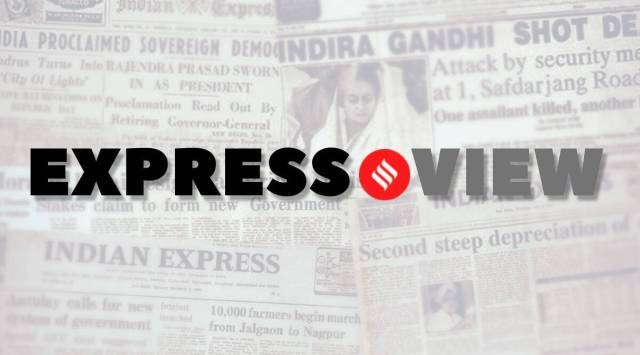
The release of the caste survey data in Bihar is a much-needed and long-overdue step for the state’s politics and policy. Caste numbers can provide a critical reality check for governments that make “samajik nyaya” or social justice their calling card, or claim to. Data can help fine-tune efforts to address historically embedded backwardness and inequality.
A wider political churning was touched off in the 1990s with the implementation of the Mandal Commission report at the Centre — it inaugurated and then routinised such a politics in the country’s north (the states of the south had already taken a lead) by mobilising historically neglected constituencies, empowering new parties and players, and expanding quotas in education and jobs to include the OBCs. Counting caste numbers is a logical next step that, at the national level, has been delayed much too long. That’s why the Bihar numbers, even as they promise to fill a gap in the state, will also resonate beyond it.
For long, the dominant Backward versus Forward cleavage in the state relegated these groups to the margins, and the absence of a unified EBC leadership has meant that political parties ranging from the RJD and JD(U) to the BJP, that have sought to coopt them, have struck bargains that assign their concerns less than their due space and role.
The politics of the EBC may well receive a new fillip now in Bihar. Ahead of the general election in 2024, Bihar’s survey will also amplify other calls for enumeration outside the state — the women’s Bill has just been passed by Parliament with the question of quota-within-quota still hanging; the Justice G Rohini Commission recently submitted its report on the sub-categorisation of OBCs; the Modi government is reportedly discussing a proposal for sub-categorisation among SCs; the Opposition alliance, INDIA, is pushing for a country-wide caste census, ostensibly to counter the BJP’s Hindutva consolidation, and many states are pushing for independent caste-based surveys in their own jurisdictions.
Even as a caste headcount is necessary and desirable in a deeply stratified society, in which caste-based reservation has become an important instrument to address historical injustice, the data must be handled with care. The challenge, going ahead, is this: The data must not become a weapon for deepening faultlines and increasing polarisation to win elections. It should not lead to the splintering and shrinking of the very notion of representation in a large and diverse democracy.
Politicians will need to remind themselves of the larger purpose: Caste must be counted in order to strengthen efforts to transcend it. In a changing India, in which education and technology are important equalising forces, caste-based affirmative action, fine-tuned with the help of caste numbers, can spur larger conversations on aspiration and ambition, freedom and opportunity, and the need for an eco-system in which citizens are neither unfairly privileged nor straitjacketed by their identities.
A series of recent electoral verdicts have driven home the fact that the people may be ahead of their politicians in recognising the future citizenship — while party campaigns all too often play upon fixed identities, voters are increasingly crossing caste and community lines and voting for moveable concerns, shared ideas and dreams.